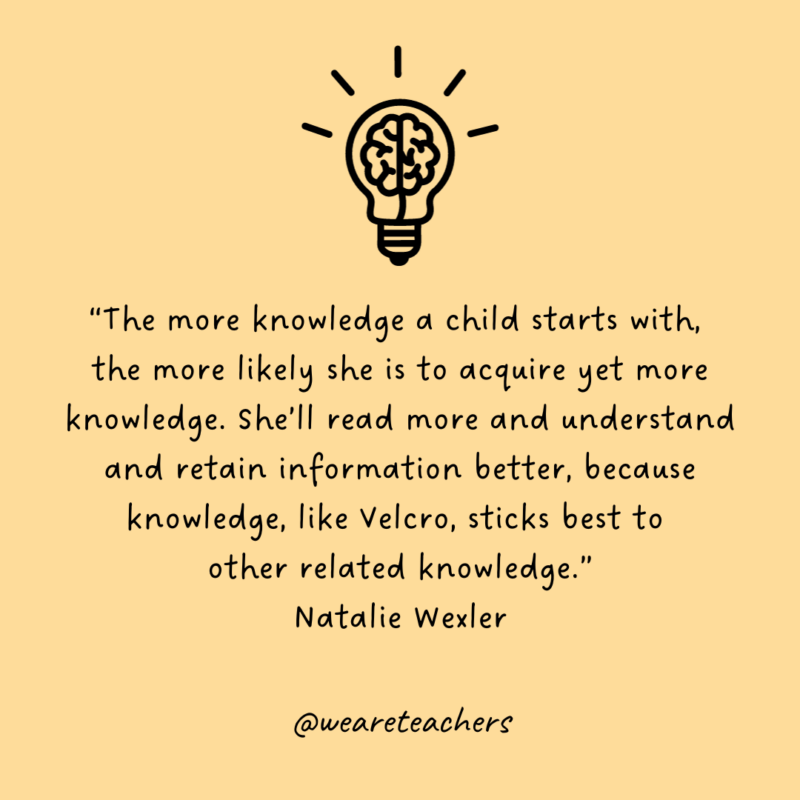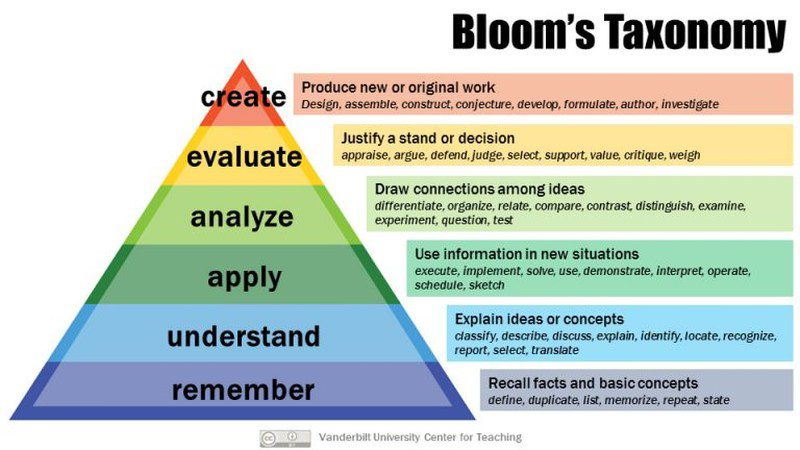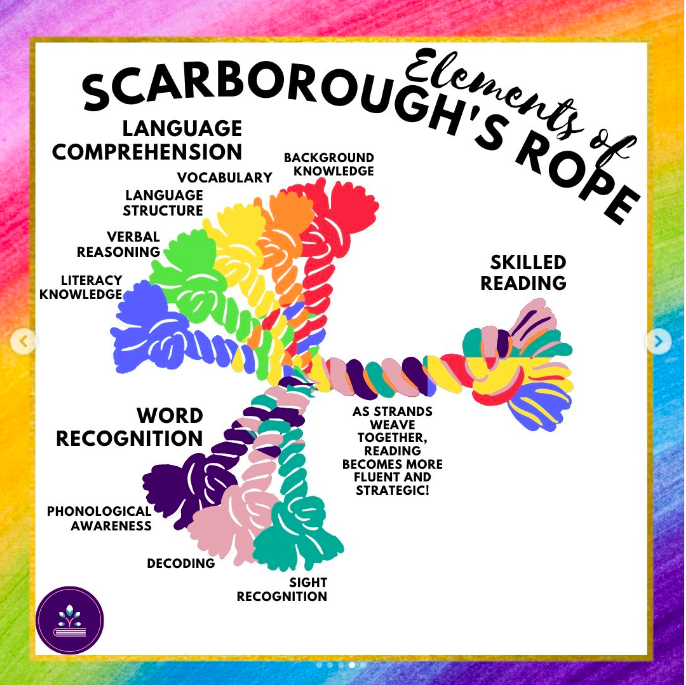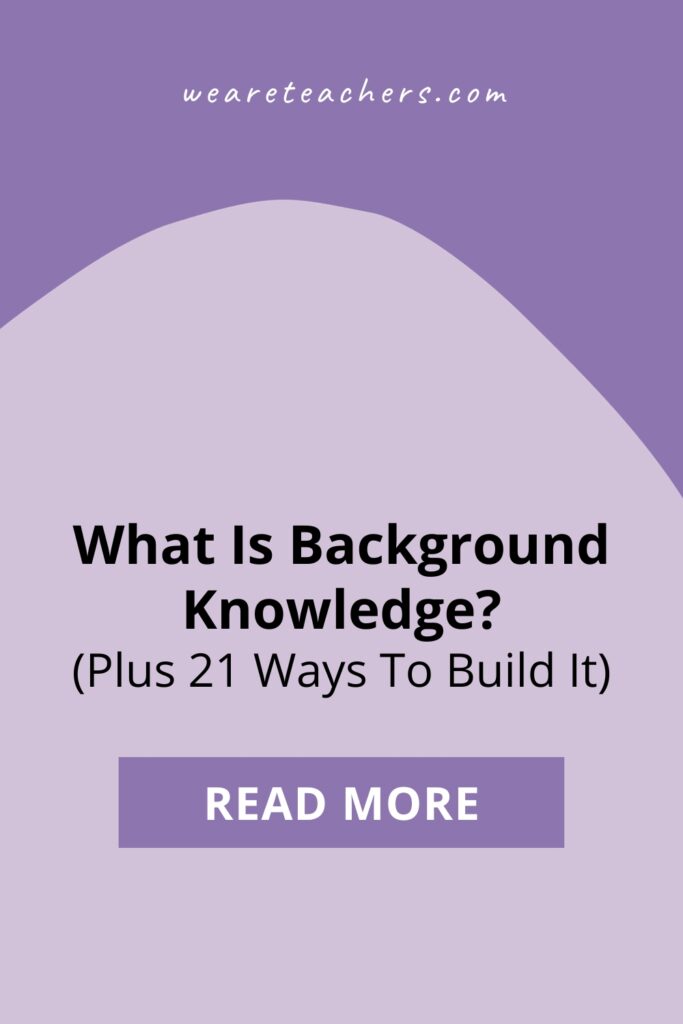How does it feel for you to decipher written medical information? Auto-repair guidance? Directions in a challenging pastry recipe? If you don’t have experience in these areas, it can take a lot more effort to make sense of what you read, even if you’re easily able to decode all the words—but any background knowledge you have will definitely help you out. Building kids’ background knowledge and helping them use it in reading is a crucial aspect of putting the science of reading to work for kids. Alongside phonics decoding skills, research shows that background knowledge plays a key role in kids’ reading success.
What is background knowledge?
Background knowledge is any preexisting understanding of concepts, situations, ideas, and vocabulary that one can call upon when reading. Lots of knowledge is topic-specific, like knowing about desert habitats or the history of slavery in the United States. Everyone also has a fund of general knowledge that spans across domains. Family, community, culture, and life experiences all contribute to a student’s general knowledge.
Why is background knowledge important for reading?
Natalie Wexler, author of The Knowledge Gap: The Hidden Cause of America’s Broken Education System—and How To Fix it, says knowledge is like Velcro. “The more knowledge a child starts with, the more likely she is to acquire yet more knowledge. She’ll read more and understand and retain information better, because knowledge, like Velcro, sticks best to other related knowledge.” A rich fund of background knowledge can help kids understand what they read—and learn more from it. (We suggest you immediately add the Knowledge Matters podcast, hosted by Wexler, to your listening queue. It dives into why knowledge-building is so crucial for kids, and how school districts can adapt their curricula to do it better. Plenty of educators talk about their real-life teaching wins.)

A must-know research study that links background knowledge and reading comprehension is “The Baseball Experiment.” Researchers divided middle schoolers into four groups based on their reading comprehension scores on a standardized test and their knowledge (or lack of knowledge) about baseball. When reading and answering questions related to a passage about baseball, strong knowledge of baseball helped kids succeed even if they had poor reading comprehension skills. This study is even a great one to talk about with kids, to raise their awareness of the value of knowledge.
How does building background knowledge help readers?
Readers use their background knowledge to make inferences, combining evidence in the text with their own experience to figure out what an author implies but doesn’t directly state. Background knowledge is what lets readers make sense of idioms and expressions, like “once in a blue moon” or “under the weather.” Readers also use their knowledge base to choose the correct interpretation of a multiple-meaning word, like knowing a character headed to the “riverbank” is not on their way to withdraw some cash.
Building background knowledge intentionally at school can help level the playing field for all readers. School-based knowledge-building can fill holes for kids who have had varying experiences and opportunities outside of school. Building background knowledge is especially important for supporting multilingual learners.
How to build background knowledge
We’ve all had instances when kids’ lack of contextual knowledge caused a reading experience to totally tank, so it’s easy to accept the importance of building background knowledge to help comprehension. But how do you build knowledge in a way that makes a difference? These six principles are important to keep in mind:
1. Remember to activate prior knowledge
Remember the Velcro! Helping kids reflect on their prior knowledge before reading helps them be ready to use it and gets them ready for any new knowledge to “stick.” Try a quick concept map or sticky-note brainstorm. For younger kids, show them photos from previous experiences, like when you went on a field trip to a farm or observed a butterfly.
2. Explicitly teach new knowledge
There’s a big push for teachers to focus on higher-order thinking, but think back to Bloom’s Taxonomy. It’s the “remembering” and “understanding” at the bottom of the pyramid that support—and make possible—the more complex thinking at the top. Don’t skip those parts, and don’t make assumptions about what kids already know.

3. Connect vocabulary
In Scarborough’s Rope, a helpful conceptual model for reading acquisition, “Background Knowledge” is entwined with the “Language Comprehension” strands. Help kids connect vocabulary words by making concept or category-oriented lists, starting with words kids are likely to know and adding new, more varied words they can learn.

4. Focus on content before skills and strategies
Many curricula encourage explicit teaching and practice of comprehension skills and strategies, like finding the main idea or making inferences. Instead of modeling or practicing a skill using texts on many different subjects, consider first diving deeply into a topic, and then practicing skills in that shared context. In Episode 1 of the Knowledge Matters Podcast, Wexler talks about how a knowledge-building curriculum puts “content in the foreground and brings in whatever skills and strategies are most likely to help students think about it.”
5. Emphasize concepts
Knowledge-building is not about memorizing facts. It’s important to help kids learn about key concepts and talk about how those concepts could relate to other topics over time. A recent study led by James Kim at Harvard looked at the power of building up kids’ “mental framework” for science concepts related to animals’ survival. After two years, they saw positive effects on students’ reading comprehension of passages that included both taught concepts and other related content.
6. Plan to build kids’ background knowledge over time
Learning about the world takes a while! Plan time for deep study of a few topics across the school year rather than superficially touching on many. Kids need repeated exposure to vocabulary and concepts for learning to stick. Coordinate the content of different units across the year and across grade levels so that learning can build on itself.
More knowledge-building ideas
Your school days are jam-packed. It’s helpful to have lots of strategies for building kids’ background knowledge on hand so you can grab any available opportunity.
7. Read widely on a topic
Multiple texts on the same topic build vocabulary and background knowledge. A variety of genres and formats, including picture books, poems, articles, and graphic novels, offers many entry points. For whole-class books or popular independent-reading titles, keep an ongoing file of background-boosting images and short texts. Don’t limit kids to text they can read themselves. Read aloud to expose them to more complex ideas.
8. Use picture books for all ages
No matter how old your kids are, picture books are engaging and effective ways to build students’ knowledge about the world.
9. Don’t skip the back matter
So many picture books have amazing author’s notes, maps, recipes, activity directions, and timelines. Try sharing them ahead of time or share them and then reread the book with the additional information in mind.
10. Tap into kid-lit educator guides
Many publishers and author websites offer extensive free teacher guides for their titles, which generally include resources for building background knowledge of the book topic. Check out guides for hundreds of titles from diverse publisher Lee & Low Books.
11. Build in knowledge-boosting stopping points during reading
Rather than front-loading information about everything a student might need to know to understand a text, how about involving them in the knowledge-building process throughout the lesson? The Iowa Reading Research Center suggests providing “just enough” background information at designated stopping points during reading.
12. Provide sensory experiences
To fully appreciate James’s journey to the center of the giant peach in Roald Dahl’s James and the Giant Peach, you really have to have touched, smelled, and tasted a regular-sized peach yourself. Add a quick sensory experience to your morning meeting a few times a week. Play different music, breathe in new smells, touch an object from nature, or view a cultural artifact or piece of art. Students’ knowledge will add up over time.
13. A little video goes a long way
Classroom time is precious, but for a student who’s never seen the seashore or snow, a video clip creates a memorable impression to draw upon when reading. We’ve got video suggestions on tons of topics for you!
14. Connect with experts
Give students memorable information to draw upon when reading. Invite a local guest to your class or use Skype a Scientist to chat with an expert in the field or lab anywhere in the world.
15. Take virtual field trips
Help the settings of students’ reading come alive. No plane ticket required! Our lists of virtual field trips and tours have so many options.
[contextly_auto_sidebar]
16. Push for real-life special presentations and trips
Yes, there are so many barriers, like cost, time, and administrative pressure, to keep up with curriculum pacing. Really, though, what’s going to help kids appreciate the majesty of Jane Yolen’s Owl Moon more than a naturalist visiting with a real owl? If field trips and special guests are a hard sell in your district, perhaps you can lobby for how they’ll improve students’ comprehension of grade-level texts!
17. Help students learn by mentoring
Kids begin growing their cache of knowledge about the world long before they need to draw on it for their own reading comprehension. You can’t go back in time to replace missed experiences, but you can have older students pay it forward. Try having peer mentors lead a science investigation, act out key concepts, or create pretend-play materials for younger kids. They’ll build their own background knowledge as they work!
18. Build knowledge about feelings
Sometimes the background knowledge required to understand a book isn’t specific to a topic but related to characters’ emotional experiences. Students in classrooms that intentionally cultivate empathy will be better equipped to make sense of stories on a deeper level. These 50 books for learning about social skills and emotions are a good place to start.
19. Pool staff knowledge to share with students
Get to know your colleagues’ interests and agree to serve as resident experts for one another’s students. Mrs. X down the hall, state record holder in the 400m, probably has tons more information to share with students reading Jason Reynolds’ Track series than you do.
20. Have students teach one another
Speaking of resident experts, you have a class full of them on everything from skateboarding to playing the violin to dealing with annoying siblings. Tie peer teaching to procedural writing or create a collection of videos.
21. Go straight to the source with interview assignments
First-person stories are so memorable. Tap into the knowledge of your community by having students conduct written or video interviews with family members or local experts on topics relevant to classroom studies.
How do you help students build background knowledge? Come discuss your ideas in the We Are Teachers HELPLINE group on Facebook.
Want more articles like this? Be sure to sign up for our newsletters.

title_words_as_hashtags